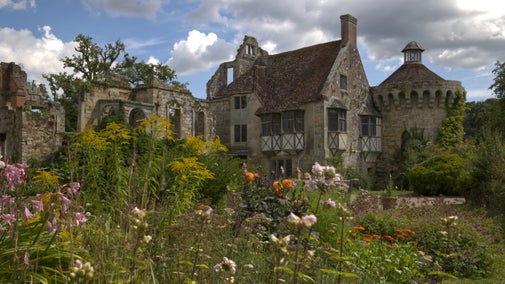Scotney parkland trail
Kent
Explore the historic parkland, take in views of Scotney Castle and discover key features of the Scotney estate. This trail is great for finding out about the history and secrets of this wooded estate in Tunbridge Wells in Kent.
Near to
Scotney CastleStart point
Scotney Castle car park, grid ref: TQ688353Trail information
*A trail with a natural grassy path, moderate hills and a tarmac lane. For further details, please see section marked Terrain.
**The route is not fully accessible for pushchairs, wheelchairs or mobility scooters. For further details, please see section marked Access.
***Dogs are welcome but, because of grazing livestock, must be kept on a lead at all times. For further details, please see section marked Facilities.
Get in touch
Our partners

We’ve partnered with Cotswold Outdoor to help everyone make the most of their time outdoors in the places we care for.
You might also be interested in
Walking
Explore some of the finest landscapes in our care on coastal paths, accessible trails, woodland walks and everything in between. Find the best places to walk near you.

Cotswold Outdoor: our exclusive walking partner
Learn about the National Trust’s ongoing partnership with Cotswold Outdoor. Find out how they help us care for precious places and the exclusive discount available for National Trust supporters.

Staying safe at National Trust places
The special places in National Trust care sometimes come with a few risks for visitors, be it coastline or countryside. Find out how to keep safe throughout your visits.

Follow the Countryside Code
Help to look after National Trust places by observing a few simple guidelines during your visit and following the Countryside Code.

The garden and estate at Scotney Castle
Discover the Picturesque garden and wider estate at Scotney Castle. Take time to look around as you explore and discover endless vistas and interesting angles for photographs and reflection.

Eating at Scotney Castle
There's nothing better than a warm spring day: fresh air, sunshine and food enjoyed in the outdoors. Whether you're going for the full lunch option or just a snack to keep you going 'til tea, there's a full range of savouries and bakes to entice you. And if the English weather doesn't play ball there'll always be jacket potatoes and fish finger sandwiches ...

Outdoor activities
Searching for a new outdoor activity to try? Discover the best places in our care for outdoor activities, including off-road cycle tracks, walking trails and coastlines for watersports.


